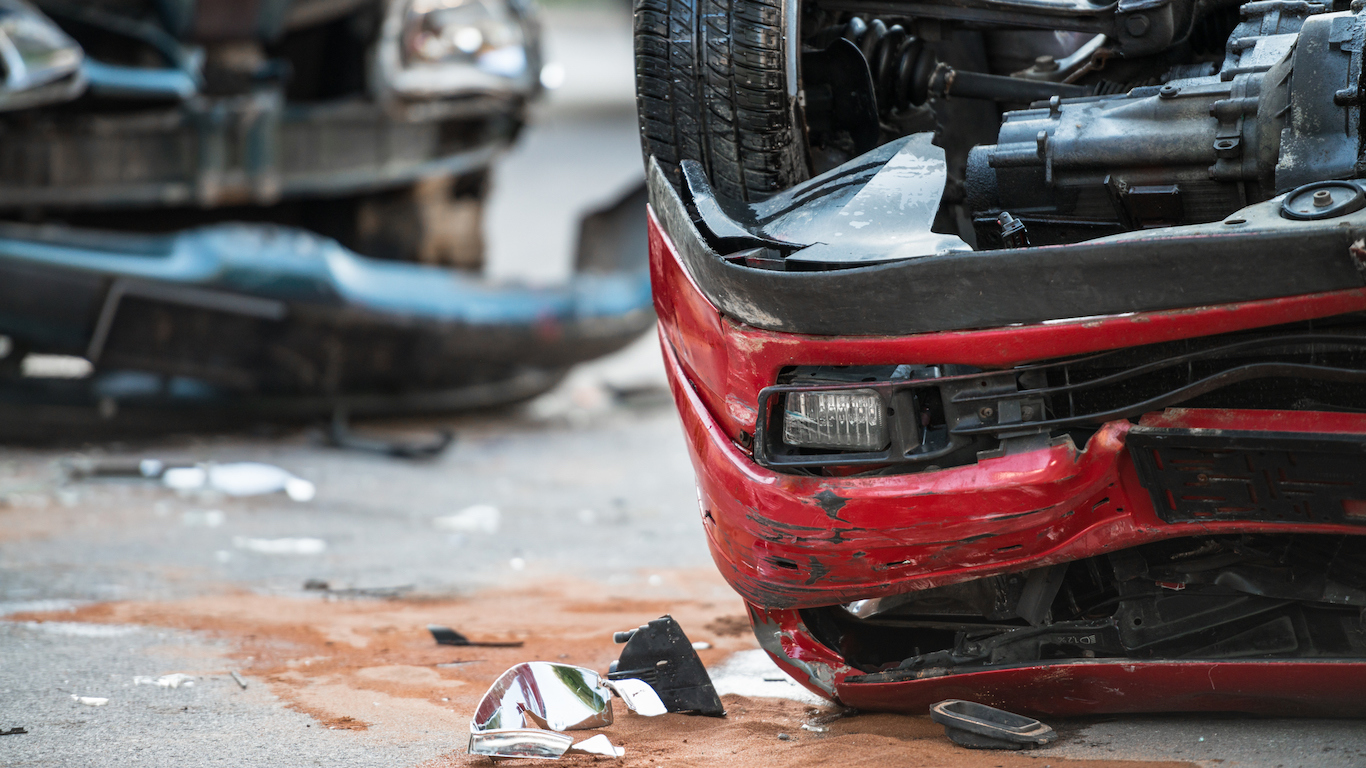
Automobiles have revolutionized the world, allowing people to travel with unmatched ease. Unfortunately, the speed and size of cars can make them dangerous — more than 37,000 Americans lost their lives in car crashes in 2017. Often, operators are at fault, as people drive while sleepy, under the influence, or without paying enough attention. Other times, however, vehicles are to blame.
Automakers sometimes miss or even deliberately ignore the safety issues of a new or existing car. These flaws can cause drivers to lose control of their cars or turn minor fender benders into deadly infernos.
The cars of today are much safer than they were decades ago, as evidenced by declining fatality rates. Many vehicles from years past would not meet today’s safety standards. Some were top-heavy and prone to rollovers. Others had design flaws — some cars could accelerate or change gears on their own while others had gas tanks that could be easily punctured, leading to fuel spills and deadly fires.
Today, vehicles with high fatality rates do not tend to have obvious design flaws, but some cars are just too small to adequately protect drivers and passengers in the event of a crash.
To determine the deadliest cars in history, 24/7 Wall St. reviewed historical auto recalls and famously dangerous vehicles, as well as data from The National Highway Traffic Safety Administration’s Fatality Analysis Reporting System and the Insurance Institute for Highway Safety.
Producing a flawed car can have major ramifications for automakers. Many corporations have been caught knowingly producing cars that are dangerous, leading to major public relations issues and making them one of America’s most hated companies.
Insurance companies are well aware of which cars are the least safe. Many of the deadliest cars cost well over $1,000 to insure annually — much higher than the average car. These are the most expensive cars to insure.
Click here to see the deadliest cars in history

Ford Model T
> Made: 1908-1927
The Ford Model T revolutionized the auto industry in many ways. It was the first car many Americans could afford, and it existed at a time when driving laws were just being written or were completely non-existent. Not to mention, the government was still a long way from establishing safety standards for automobiles.
The Model T was released in 1908. That summer, 31 people were killed in auto accidents in Detroit alone. The cars were a fire hazard, as gas tanks were located underneath the seats, and their flat glass windshields were known to severely cut anyone ejected from the car in a crash. As recently as 2013, a woman in Utah died after the Model T she was riding in overturned.
[in-text-ad]

Chevrolet Corvair
> Made: 1960-1969
The Chevrolet Corvair was a popular car model until it developed a reputation as a death trap after a string of highly publicized accidents. In 1962, comedian Ernie Kovacs died after an accident in his Corvair. Three years later, Ralph Nader singled the vehicle out in his book “Unsafe at Any Speed,” which tackled the car’s flawed handling. Chevrolet eventually admitted the Corvair was prone to fishtailing, particularly when driving fast, unless the back and front tires had a very different air pressures. General Motors was sued over 100 times for Corvair-related incidents.
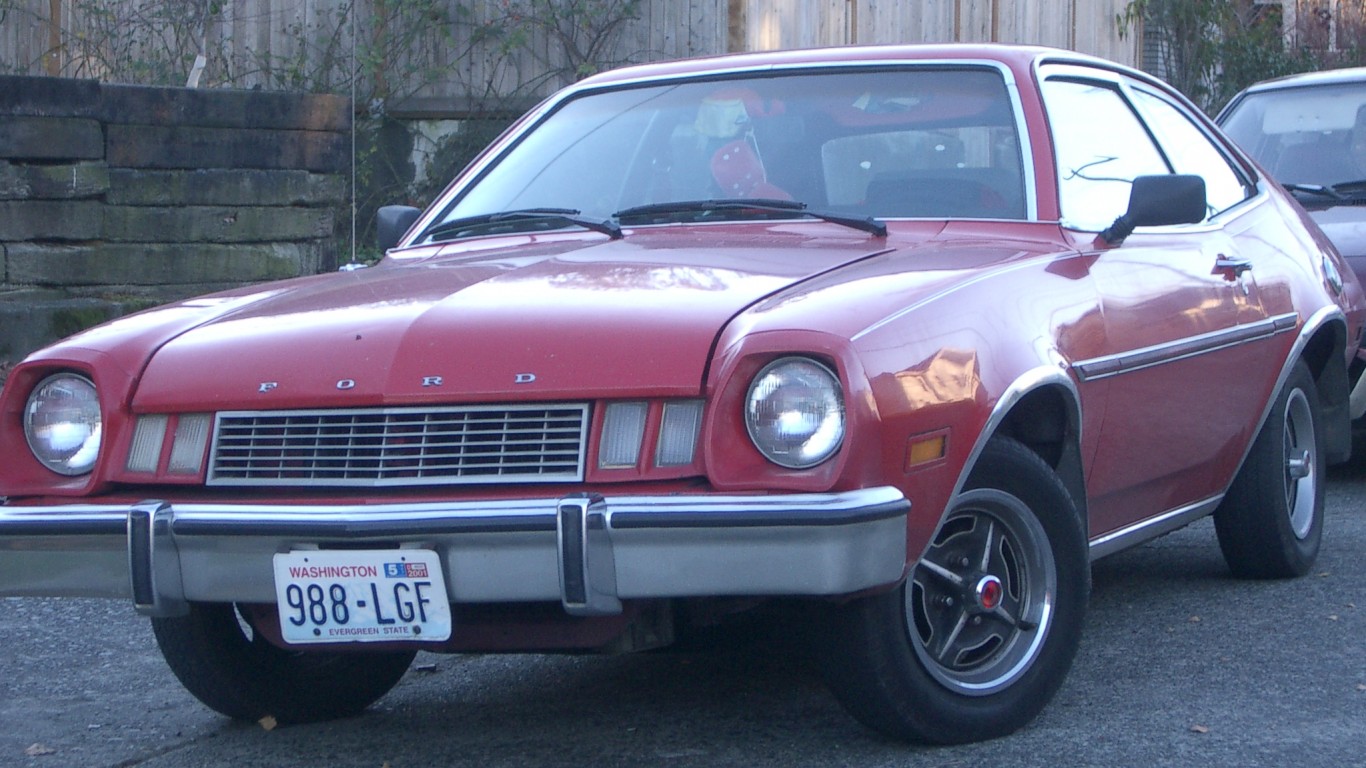
Ford Pinto
> Made: 1971-1980
The design flaws of the Ford Pinto eventually turned into a major scandal for Ford. The company knew the Pinto had a gas tank that was vulnerable to damage in collisions, causing leaks and leading to fires. It was also reported to shift gears on its own. Despite warnings from engineers, Ford decided it would be cheaper to pay for wrongful death lawsuits than install an $11 fix in each car. These flaws resulted in at least 51 deaths, though the true total may be higher. Ford faced reckless homicide charges, but it was acquitted in 1980.
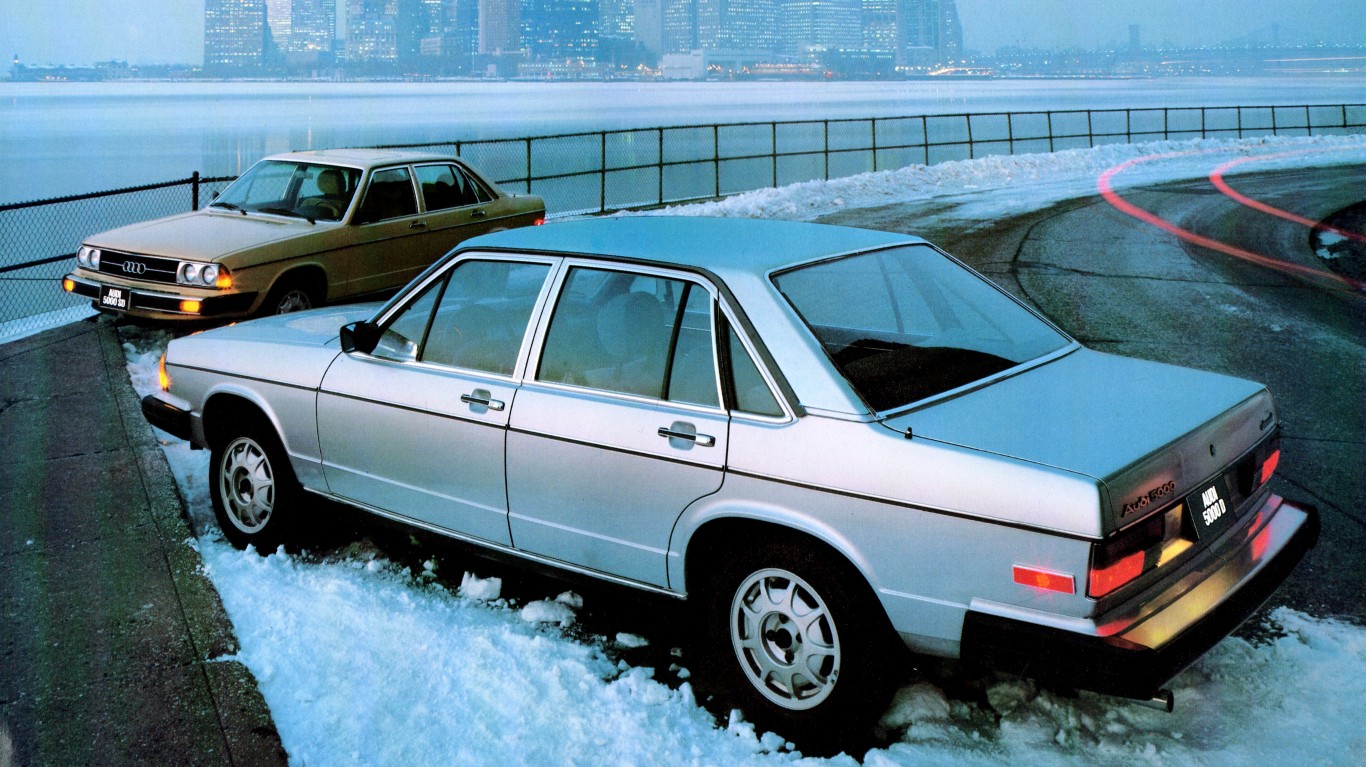
Audi 5000
> Made: 1978-1986
The major design flaw of the Audio 5000 led to sweeping changes in the auto industry. In the 1970s and 1980s, drivers reported over 1,600 incidents of 5000 models changing gears and speeding up by themselves, causing hundreds of accidents and several deaths. To prevent this phantom gear shift, Audi’s parent company Volkswagen added shift locks to all 5000 models — a feature that is now required for all cars.
[in-text-ad-2]
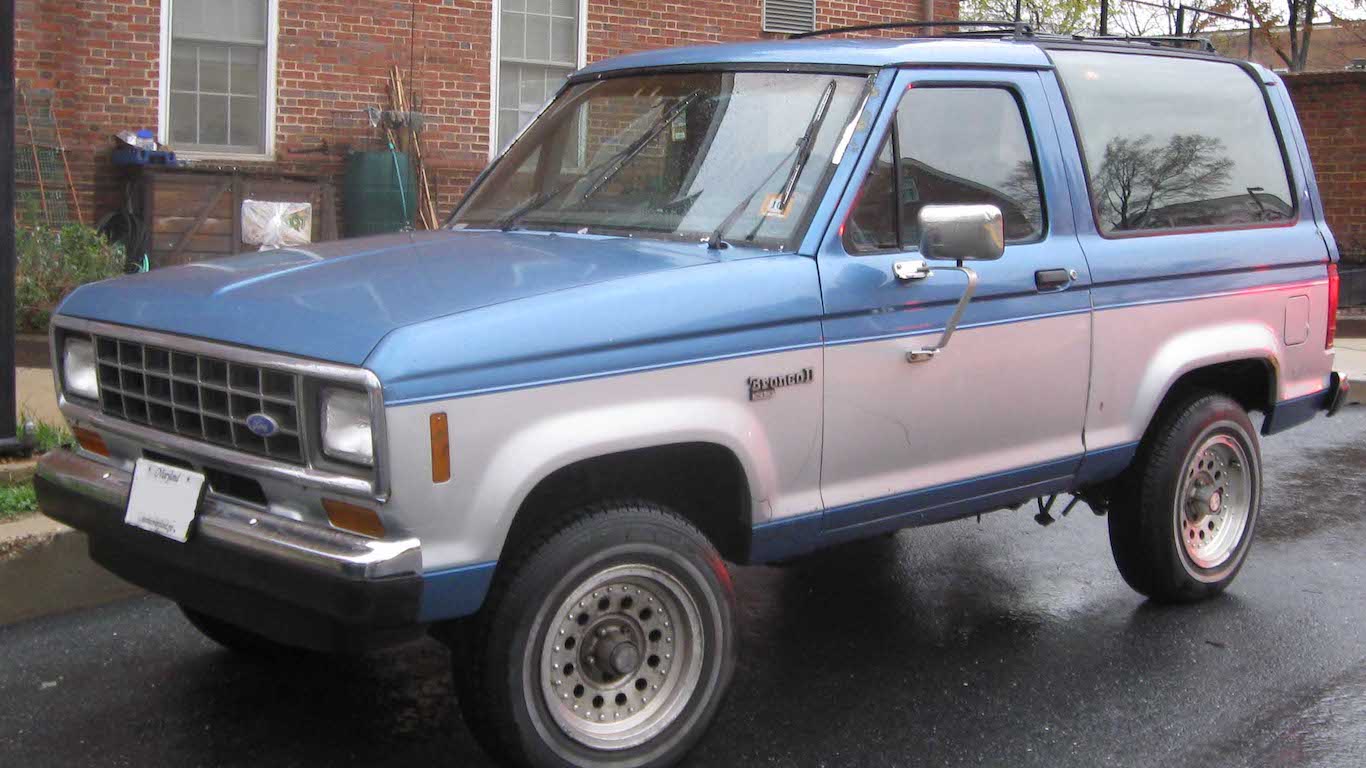
Ford Bronco II
> Made: 1983-1990
The first ever SUV to hit the road, the Ford Bronco II became popular quickly. Like many SUVs to follow, it had a high risk of rolling over, even at speeds as low as 20 mph. The Insurance Institute for Highway Safety said it was among the “most deadly” vehicles on the road. More than 800 people have reportedly died in Bronco II rollover incidents. Ford reportedly knew of these risks before launching the Bronco II, but it never recalled any of the cars, instead replacing them with the newer Ford Explorer in 1990.
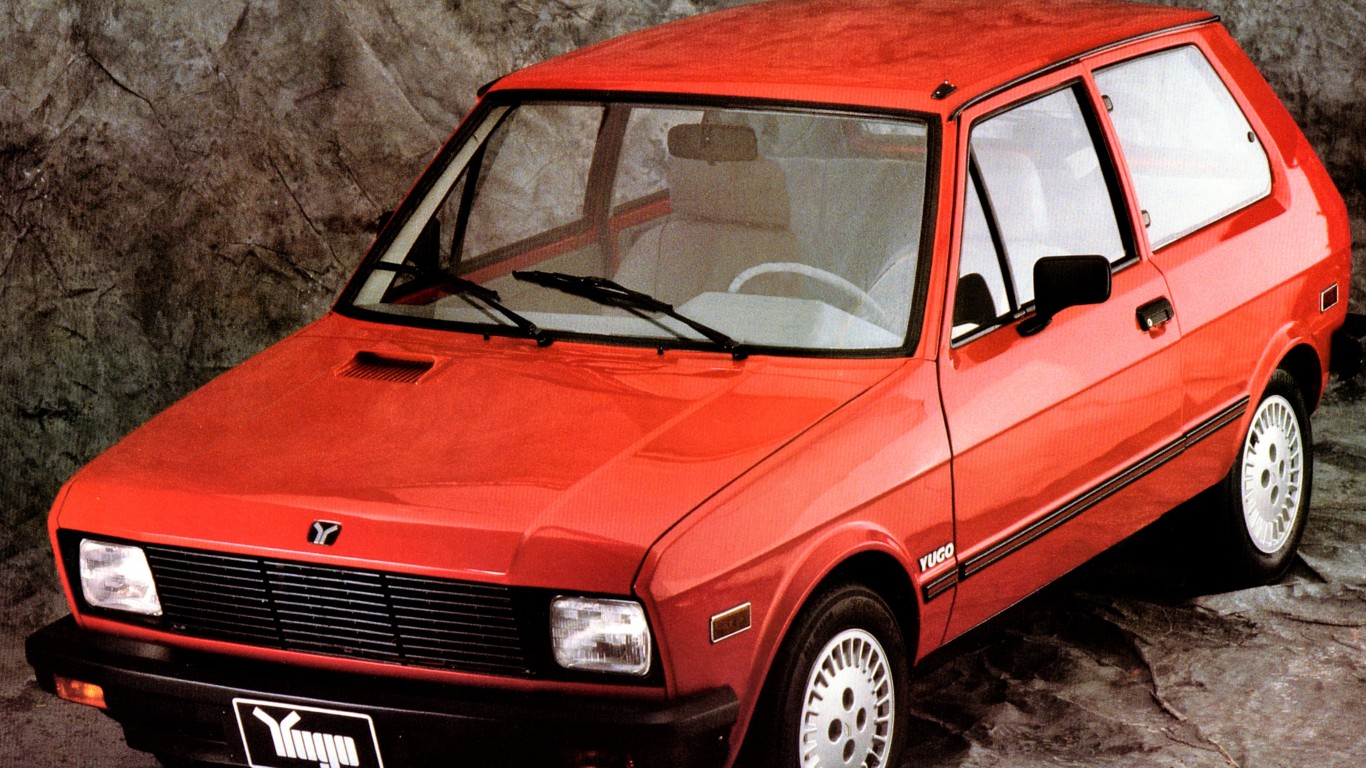
Yugo GV
> Made: 1985-1992
The Yugo GV was marketed as a light, cheap car to get people from A to B. It proved to be too light to protect drivers or passengers, as it offered almost no front-end crash protection. It still has one of the highest U.S. fatality rates of any car, with more than 3.6 occupant deaths per 10,000 GVs. These issues were pushed into the spotlight when a GV was reportedly blown off a bridge by a gust of wind, sending a driver plummeting to her death.
[in-text-ad]
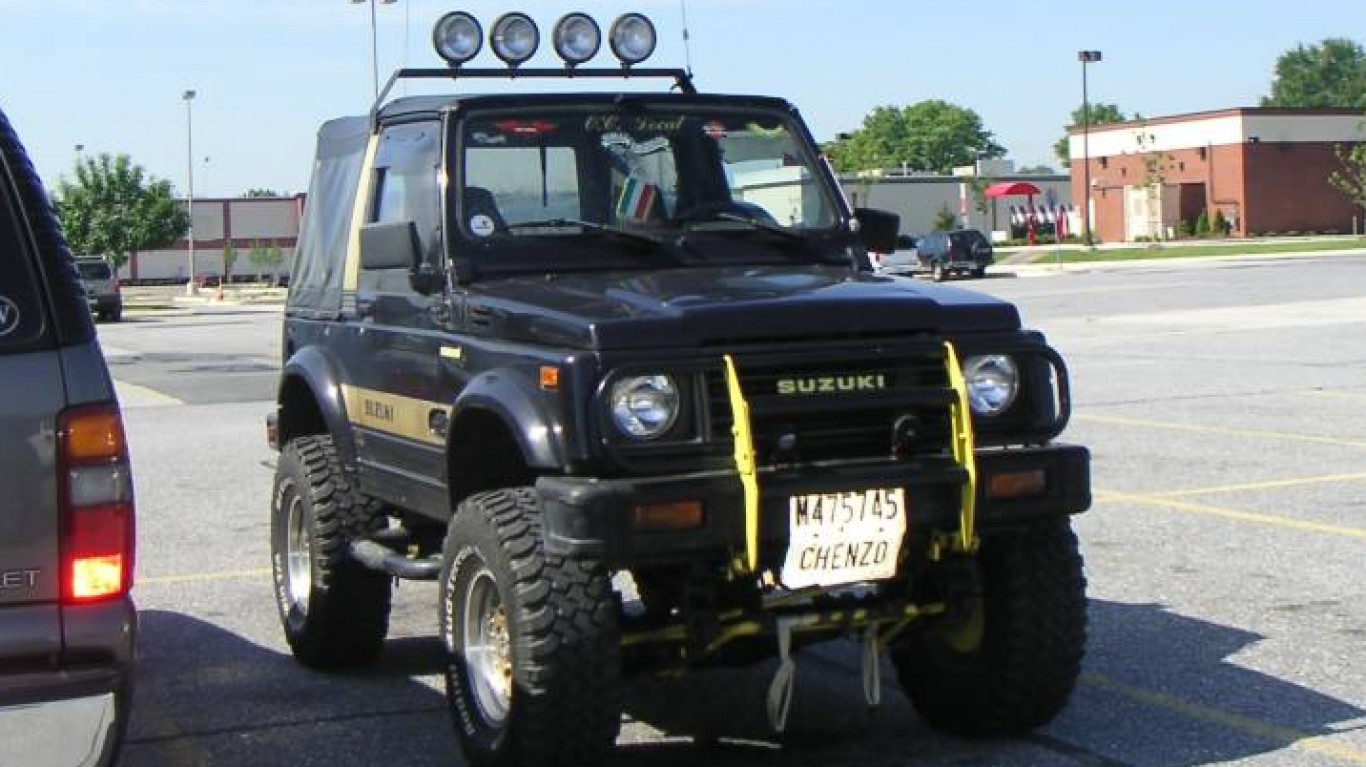
Suzuki Samurai
> Made: 1985-1995
Like other early SUVs, the Suzuki Samurai turned out to be much too top heavy to be safe. Consumer Reports published the results of a test that showed the vehicles were prone to tipping over. Suzuki initially pushed back against those reports, but after thousands of accounts of rollovers, the company finally acknowledged that more than 200 people died and over 8,000 were injured as a result of Samurais flipping.
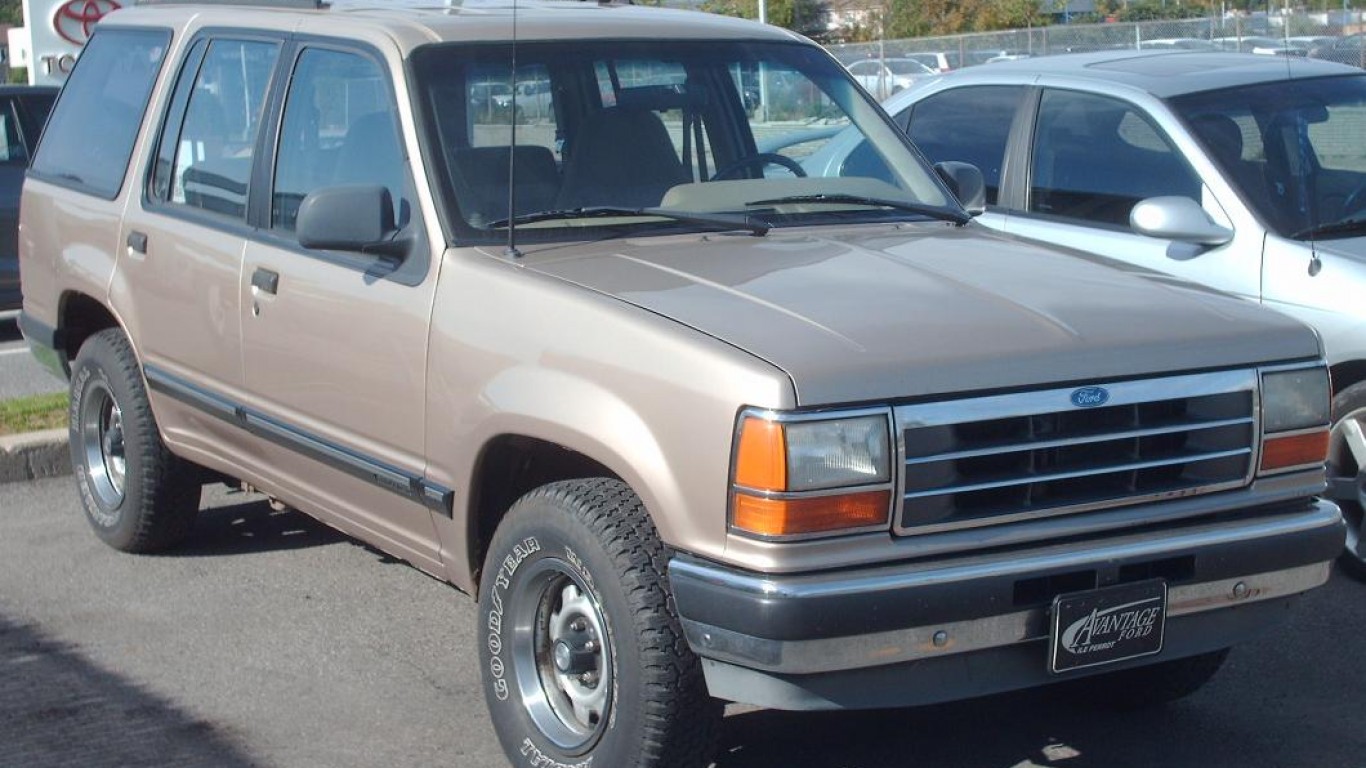
Ford Explorer
> Made: 1990- present
The Ford Explorer was created as a replacement for the top-heavy and roll-prone Bronco II. But it ended up having many of the same issues as its predecessor. Explorer rollover incidents led to hundreds of deaths and congressional inquiries into Ford’s safety issues. In the hearings, Ford pointed the finger at the Firestone tires the Explorers were equipped with and severed its business relationship with the tire supplier. Congress ultimately sided with Ford, as Explorers were similar in design to other SUVs that did not have the same rollover problems. All in all, these issues led to an estimated 330 deaths.

Ford Crown Victoria Police Interceptor
> Made: 1992-2011
Police face a dangerous work environment every day, but it used to be even more perilous when the model cruiser was a Ford Crown Victoria Police Interceptor, which had a dangerous flaw. For decades, Crown Vics were produced with gas tanks behind their rear axles — a position that makes them prone to puncture in rear-end collisions, leading to gas leaks and fires. Ford introduced a fix in 2005, but critics say it has not helped in more severe incidents.
[in-text-ad-2]

Chevrolet Cobalt
> Made: 2005-2010
The Chevy Cobalt was beset with a number of dangerous problems until it was discontinued in North America in 2010. Faulty ignition switches caused some vehicles to stall, leading to well over 100 deaths in a number of GM cars, most notably the Cobalt. GM paid $2.5 billion in settlement and penalties over the scandal — plus a $35 million fine for delaying the recalls. Tens of thousands of Cobalts were also recalled in 2012 in warmer states after a plastic part connected to the fuel pump was shown to be prone to cracks and leaks.
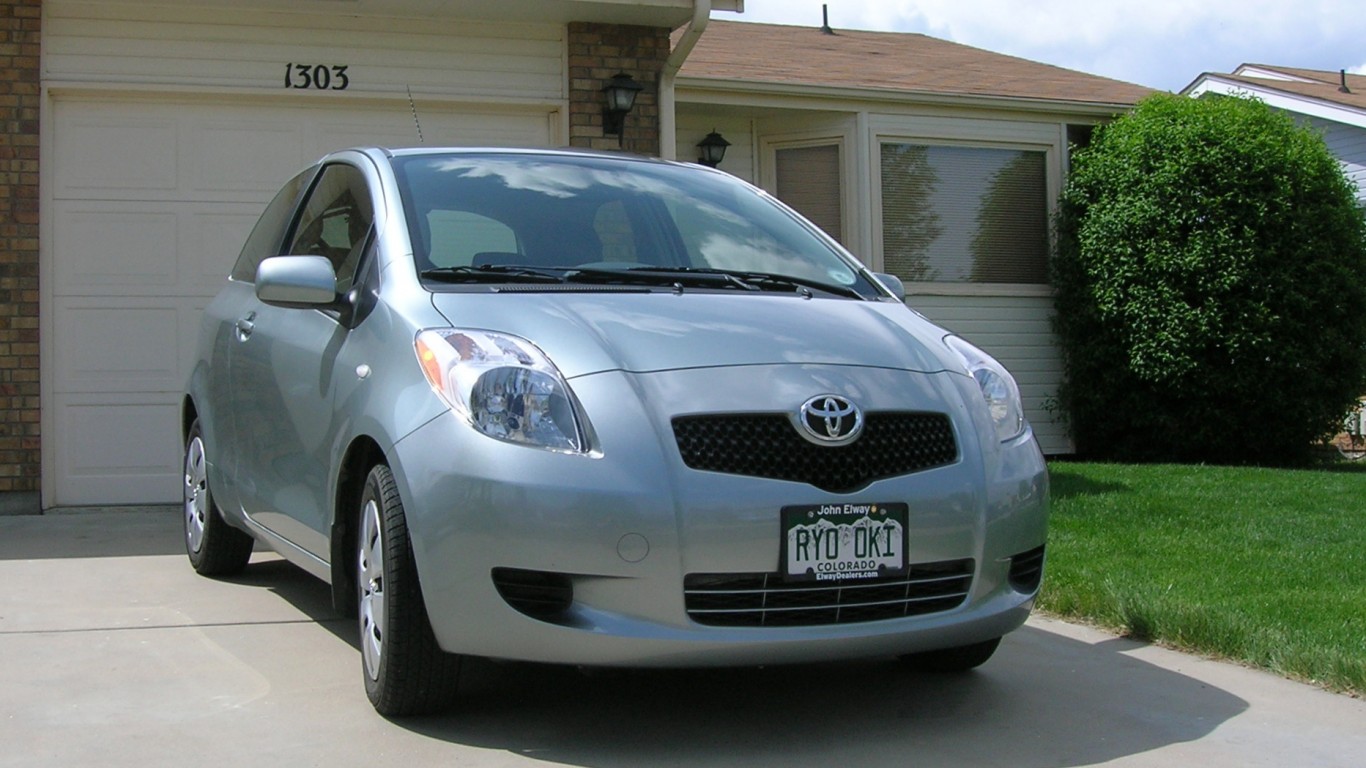
Toyota Yaris
> Made: 2007-2018
In addition to a critical design flaws, the Toyota Yaris proved to be too small to be safe. From 2009 to 2011, Yaris drivers and passengers were more likely to file personal injury claims after an accident than those in any other car as the tiny hatchback provided little protection. The Yaris suffered from the same issues as several other Toyota vehicles, including a wiring problem that stopped airbags from working, and a defect that caused the front seats to move without warning.
[in-text-ad]
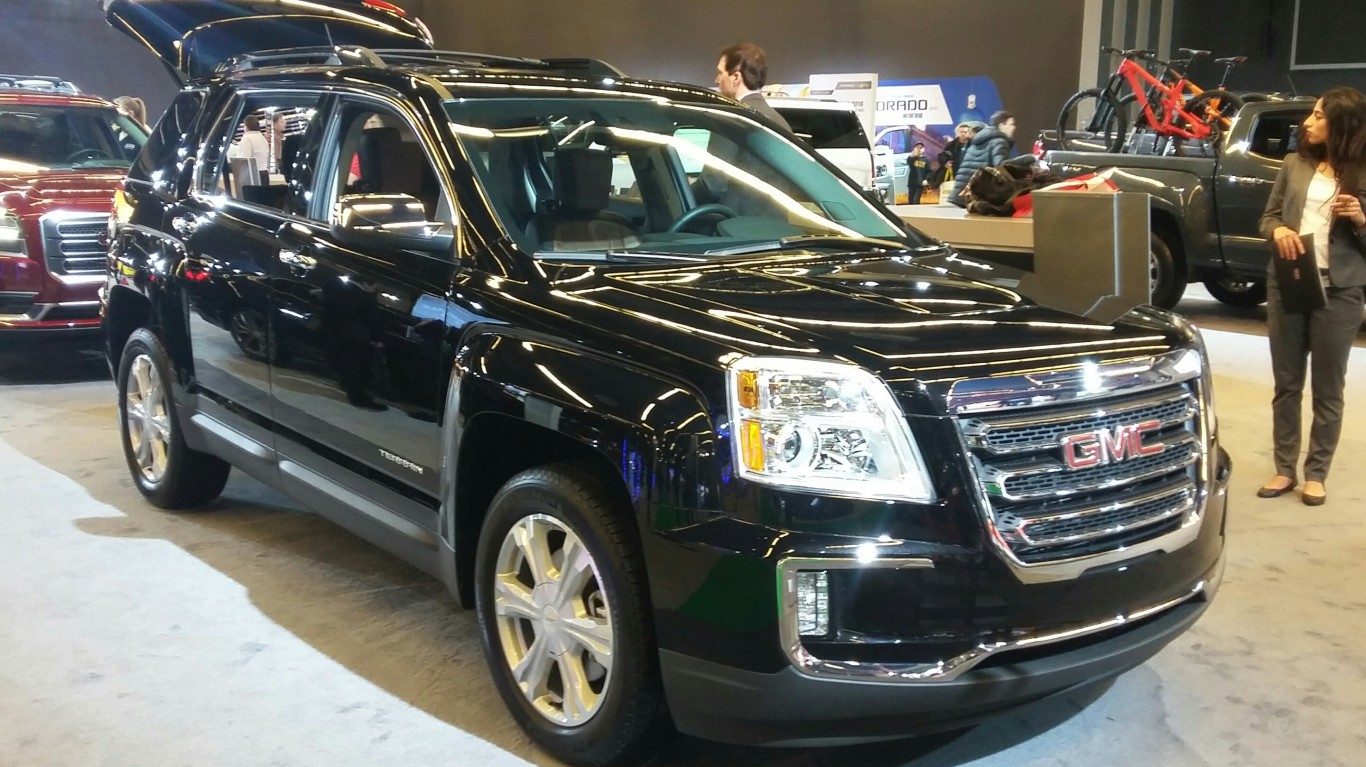
GMC Terrain
> Made: 2010-present
When reviewing the data from 2012 to 2015, the GMC Terrain 2-wheel drive was by far the deadliest SUV on the road, according to IIHS. The Terrain 2WD had a death rate of 53 deaths per million registered vehicle years, as compared with the average rate across all vehicles of 30 deaths per million. It ranked among the worst SUVs for single-vehicle, multi-vehicle, and rollover crash death rates.

Mitsubishi Mirage
> Made: 1992-present
According to an iSeeCars analysis of Department of Transportation data, the Mitsubishi Mirage accounts for more fatal accidents per mile driven than any other car. For every billion miles a Mirage drove, 10.2 of them were involved in a fatal accident, compared with the average fatality rate of 2.6 per billion miles among all cars. Though it has not had any major flaws or issues, smaller subcompact cars like the Mirage can struggle to protect passengers from the impact of a crash.
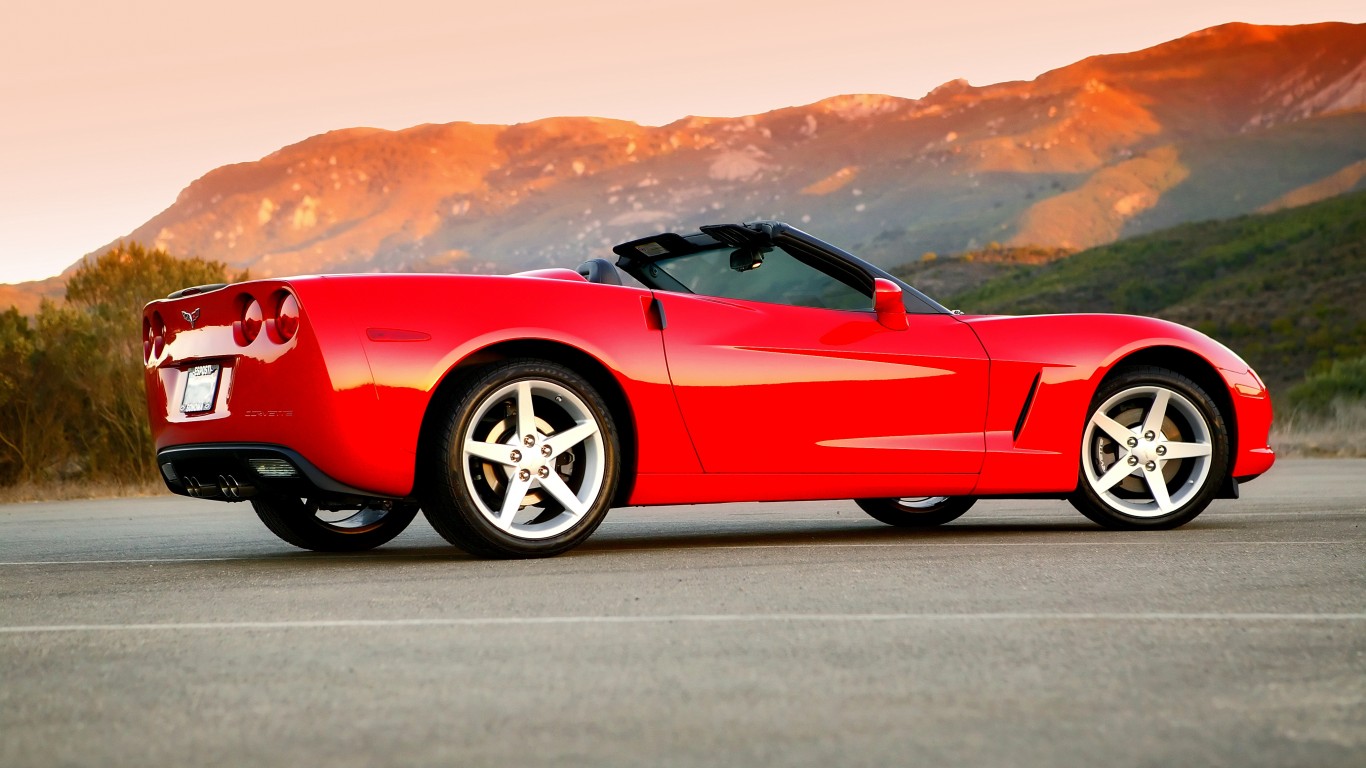
Chevrolet Corvette
> Made: 1992-present
The Chevrolet Corvette Corvette had a fatal accident rate of 9.8 cars per billion miles, the second-highest rate among recent model year vehicles, iSeeCars found. Studies have found that wealthier people in more expensive cars tend to drive rudely and recklessly. Considering the Corvette’s high price tag, owners are likely to be wealthy and drive more recklessly.
[in-text-ad-2]
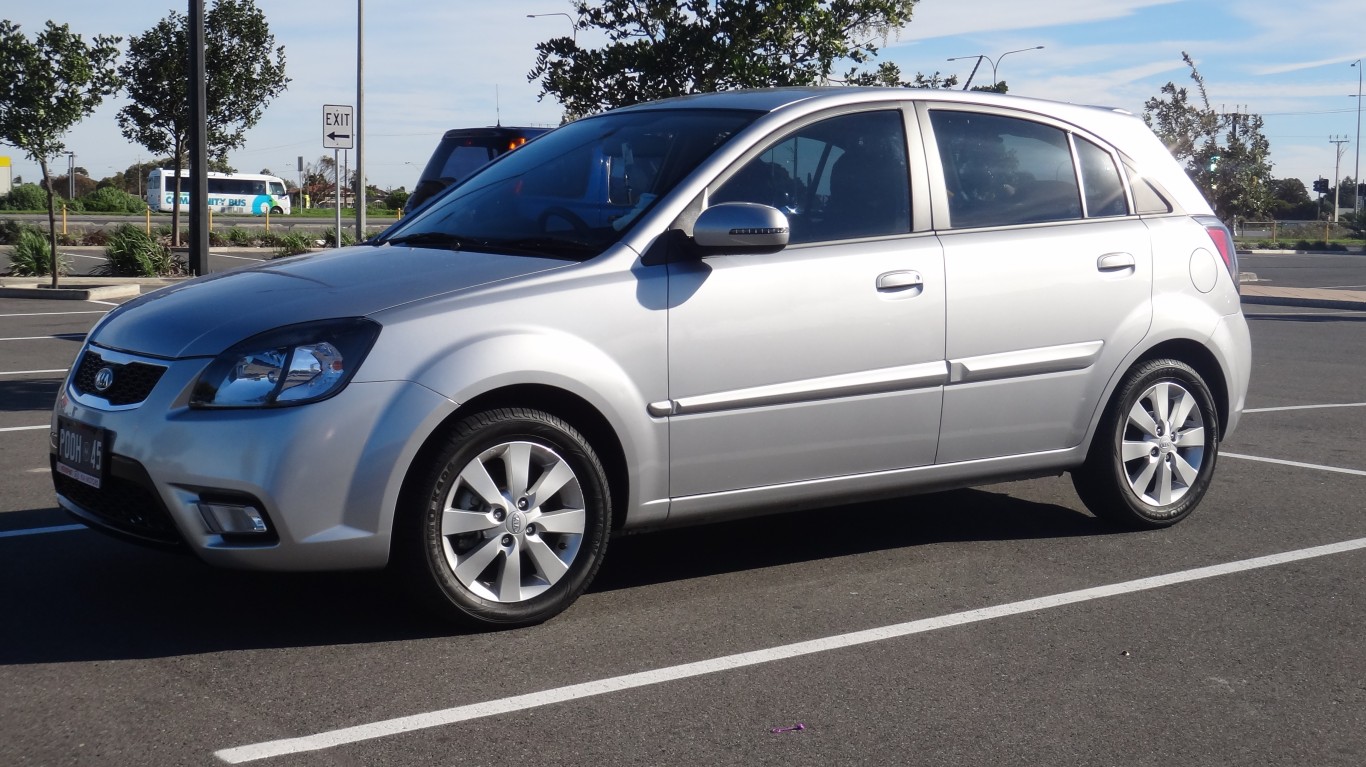
Kia Rio sedan
> Made: 2001-present
No modern car is more dangerous in a multi-vehicle accident than the Kia Rio. The IIHS found that, from 2012 to 2015, the Rio had a rate of 80 deaths in multi-vehicle wrecks per million vehicle years — more than four times the average rate of all passenger vehicles, which is 18 per million. More recent versions of the Rio have improved their crash preparedness.
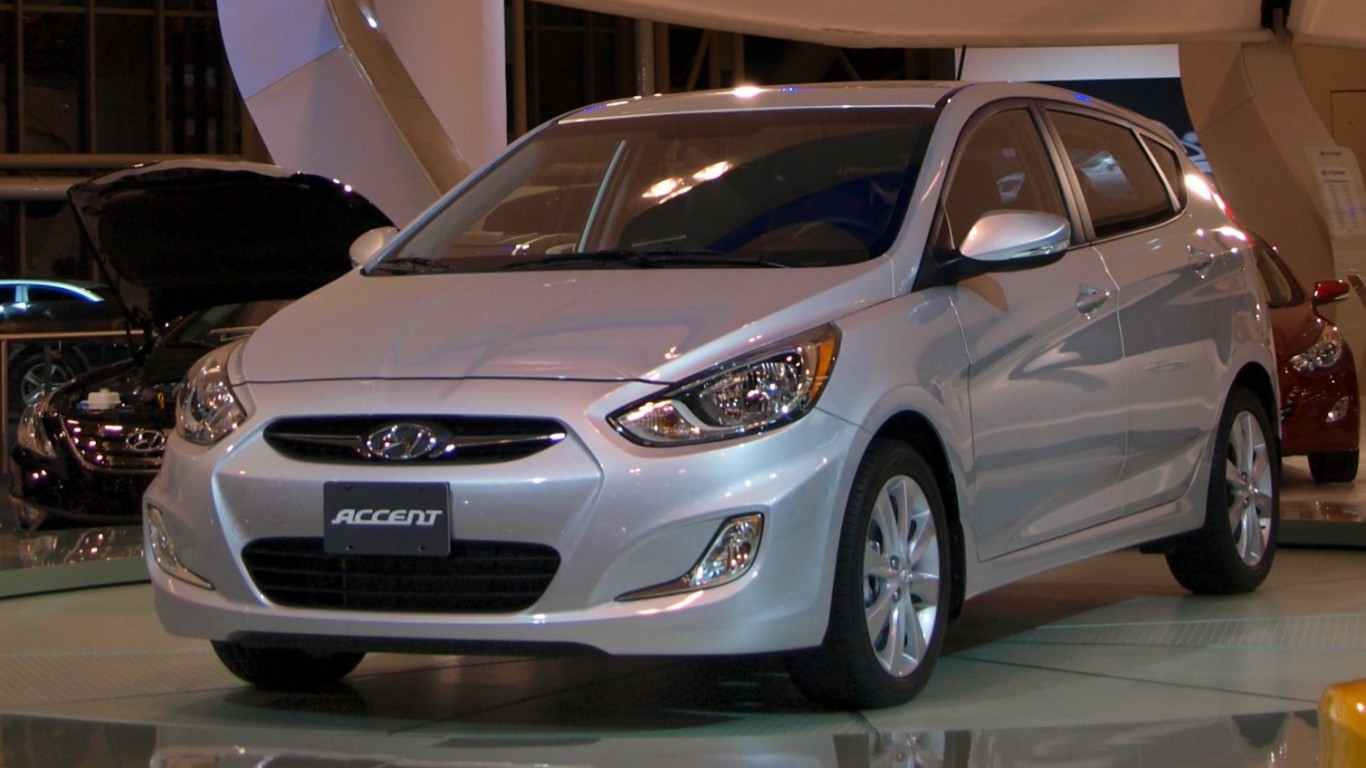
Hyundai Accent
> Made: 1995-present
The Hyundai Accent has proved to be more than three times deadlier for its drivers and passengers than any other car on the road. From 2012 to 2015, Accents accounted for 104 deaths per million vehicle years, more than any other car in that timespan. Like many other smaller cars, the Accent is especially susceptible to multi-car collisions as its smaller frame offers little protection to passengers and little room for safety features.
It’s Your Money, Your Future—Own It (sponsor)
Retirement can be daunting, but it doesn’t need to be.
Imagine having an expert in your corner to help you with your financial goals. Someone to help you determine if you’re ahead, behind, or right on track. With SmartAsset, that’s not just a dream—it’s reality. This free tool connects you with pre-screened financial advisors who work in your best interests. It’s quick, it’s easy, so take the leap today and start planning smarter!
Don’t waste another minute; get started right here and help your retirement dreams become a retirement reality.
Thank you for reading! Have some feedback for us?
Contact the 24/7 Wall St. editorial team.
 24/7 Wall St.
24/7 Wall St.



